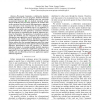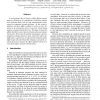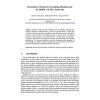832 search results - page 55 / 167 » Effect of Malicious Synchronization |
WIOPT
2010
IEEE
13 years 8 months ago
2010
IEEE
—Revocation of public-key certificates is an important security primitive. In this paper, we design a fully distributed local certificate revocation scheme for ephemeral networ...
DSN
2011
IEEE
12 years 9 months ago
2011
IEEE
—We present Communix, a collaborative deadlock immunity framework for Java programs. Deadlock immunity enables applications to avoid deadlocks that they previously encountered. D...
NCA
2008
IEEE
14 years 4 months ago
2008
IEEE
In environments like the Internet, faults follow unusual patterns, dictated by the combination of malicious attacks with accidental faults such as long communication delays caused...
WWIC
2007
Springer
14 years 4 months ago
2007
Springer
Mobile Ad Hoc networks (MANETs) are susceptible to having their effective operation compromised by a variety of security attacks. Nodes may misbehave either because they are malici...
ACSAC
2006
IEEE
14 years 4 months ago
2006
IEEE
Network Intrusion Detection Systems (NIDS) have become crucial to securing modern networks. To be effective, a NIDS must be able to counter evasion attempts and operate at or near...



